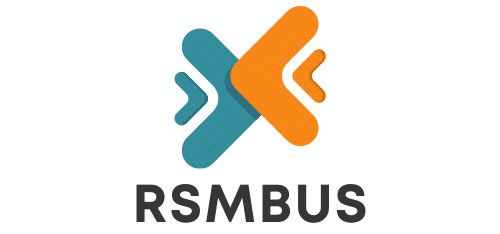What’s the Latest in Deep Learning for Enhancing UK Traffic Flow Analysis?

Traffic flow analysis plays a crucial role in developing robust transportation systems. Recent technological advancements offer the opportunity to leverage deep learning models to improve traffic flow prediction and management. In this context, let’s delve deeper into cutting-edge advances in deep learning for enhancing UK traffic flow analysis.
Understanding the Basics of Deep Learning
Deep learning, a subfield of artificial intelligence, involves algorithms inspired by the structure and function of the human brain, known as artificial neural networks. Powered by sophisticated computational models composed of multiple processing layers, or simply, layers, these networks are adept at recognising patterns in large, complex datasets.
A lire en complément : Can Personalized Health Apps Encourage Better Lifestyle Choices in the UK?
Traffic in the UK, like in any other country, is a complex, dynamic system that changes with time, weather conditions, special events, and countless other variables. Therefore, it’s no surprise that scholars and researchers have turned to deep learning models to make sense of traffic flow patterns.
Deep Learning Models for Traffic Flow Prediction
One of the primary applications of deep learning in traffic analysis is flow prediction. Traffic flow prediction models use historical data to predict future conditions. These models are integral to traffic management systems, helping in optimising traffic signal timings, planning road constructions and managing road incidents.
A découvrir également : How to Build an Engaging Local History Museum with Community Support?
Long Short-Term Memory (LSTM), a type of artificial recurrent neural network, is often employed in traffic flow prediction. LSTM-based models are capable of learning long-term dependencies in time series data, which makes them particularly useful for predicting traffic flow.
A study by scholars from the University of Warwick employed LSTM models for traffic flow prediction, using a large dataset of UK traffic data. It demonstrated that LSTM outperformed other traditional machine learning models in terms of prediction accuracy and computational efficiency.
Deep Learning Models for Traffic Data Analysis
Another application of deep learning in traffic analysis is data processing and interpretation. Traffic data comes in various forms – from simple count data from induction loops to complex video data from CCTV cameras.
Convolutional Neural Networks (CNNs) are commonly used for analysing visual traffic data. These models have shown success in detecting vehicles, estimating their speeds, and predicting their trajectories.
In terms of UK traffic data analysis, the Google-developed Inception-v3, a pre-trained CNN model, has been used to analyse UK motorway traffic data from Highways England’s CCTV cameras. The results showed that the model successfully detected, categorized, and tracked vehicles in different traffic conditions.
Transportation Network Analysis with Deep Learning
Deep learning also finds its use in transportation network analysis. Here, models are used to understand and predict the behaviour of the entire transportation network, rather than individual traffic flows.
Graph Neural Networks (GNNS), deep learning models that can directly analyze and process graphs, are often used for this purpose. These models can effectively analyze the topological structure of the transport network and learn complex patterns within it, enhancing the overall performance of the traffic management system.
In the UK context, researchers from the University of Cambridge utilized a GNNS-based model to analyze the London transport network. The model was trained on a large dataset of daily passenger flows and was able to accurately predict future flow patterns, demonstrating the potential of such models in improving urban mobility.
The Future of Deep Learning in UK Traffic Analysis
While deep learning has already made significant strides in enhancing UK traffic flow analysis, there is still much room for improvement. For instance, combining different deep learning models to create a multi-layer approach may yield better results. Additionally, integrating these models with other technology, such as IoT devices, could offer real-time monitoring and prediction capabilities.
The future also holds potential for new models and techniques. Self-attention mechanisms currently being explored may allow models to focus on relevant parts of the input data, thereby improving prediction accuracy.
Regardless of the specific path the future takes, it is clear that deep learning will continue to play a critical role in advancing UK traffic flow analysis. As researchers continue to refine and develop these models, we can look forward to a future of smarter, more efficient transportation systems.
Using Deep Learning for Traffic Congestion Analysis
The application of deep learning models extends beyond traffic flow prediction and data analysis to include traffic congestion analysis. Traffic congestion, a common issue in urban areas, significantly impacts the efficiency of transportation systems and contributes to environmental pollution. Deep learning models provide a powerful tool for analysing congestion patterns and devising effective countermeasures.
Taking advantage of time series prediction capabilities, deep learning models can forecast congestion levels, enabling authorities to take preventive action. For instance, Convolutional Long Short Term Memory (ConvLSTM), a hybrid model combining the strengths of Convolutional Neural Networks (CNNs) and Long Short Term Memory (LSTM) networks, can be used to predict spatial-temporal traffic congestion.
In a study featured on Google Scholar, researchers used a ConvLSTM model to predict congestion levels in Birmingham, UK, using historical traffic data. The model demonstrated superior performance in predicting both short-term and long-term congestion levels, making it a promising tool for real-time traffic management.
Furthermore, deep learning models like Graph Convolutional Networks (GCNs) can analyse the topological characteristics of the road network, allowing for more comprehensive congestion analysis. This provides a deeper understanding of the factors contributing to congestion, assisting authorities in planning urban infrastructure improvements.
However, it’s worth noting that the effectiveness of these models depends on the quality and richness of the available traffic data. Integrating different data sources, such as induction loop count data, CCTV footage, and IoT sensor data, can enhance the models’ performance.
Conclusion: Deep Learning – A Crucial Asset for UK Traffic Analysis
The role of deep learning in UK traffic analysis can’t be overstated. From flow prediction to congestion analysis, these powerful neural networks have shown remarkable proficiency in making sense of complex traffic data. By learning patterns in historical data, they can accurately forecast future traffic conditions, guide traffic management decisions, and ultimately, enhance the efficiency of transportation systems.
Despite the progress made, the field is still ripe for exploration. Novel models and techniques, such as multi-layer models and self-attention mechanisms, offer promising avenues for enhancing prediction accuracy. Furthermore, the integration of deep learning models with IoT devices could bring about real-time monitoring and prediction capabilities, revolutionising traffic management.
The challenges ahead are numerous, including ensuring the availability of high-quality, diverse traffic data and refining models to improve their robustness and reliability. However, the potential rewards – in terms of improved traffic flow, reduced congestion, and more sustainable urban mobility – are substantial. As machine learning and AI continue to evolve, we can expect deep learning to remain at the forefront of advances in traffic flow analysis.
In conclusion, deep learning presents a transformative approach to traffic analysis, with significant potential to improve the UK’s transportation systems. As researchers continue to explore new models and refine existing ones, we can anticipate more accurate traffic predictions and more efficient transportation networks. In the face of growing urbanisation and increasing traffic complexity, these advancements couldn’t come at a better time.
